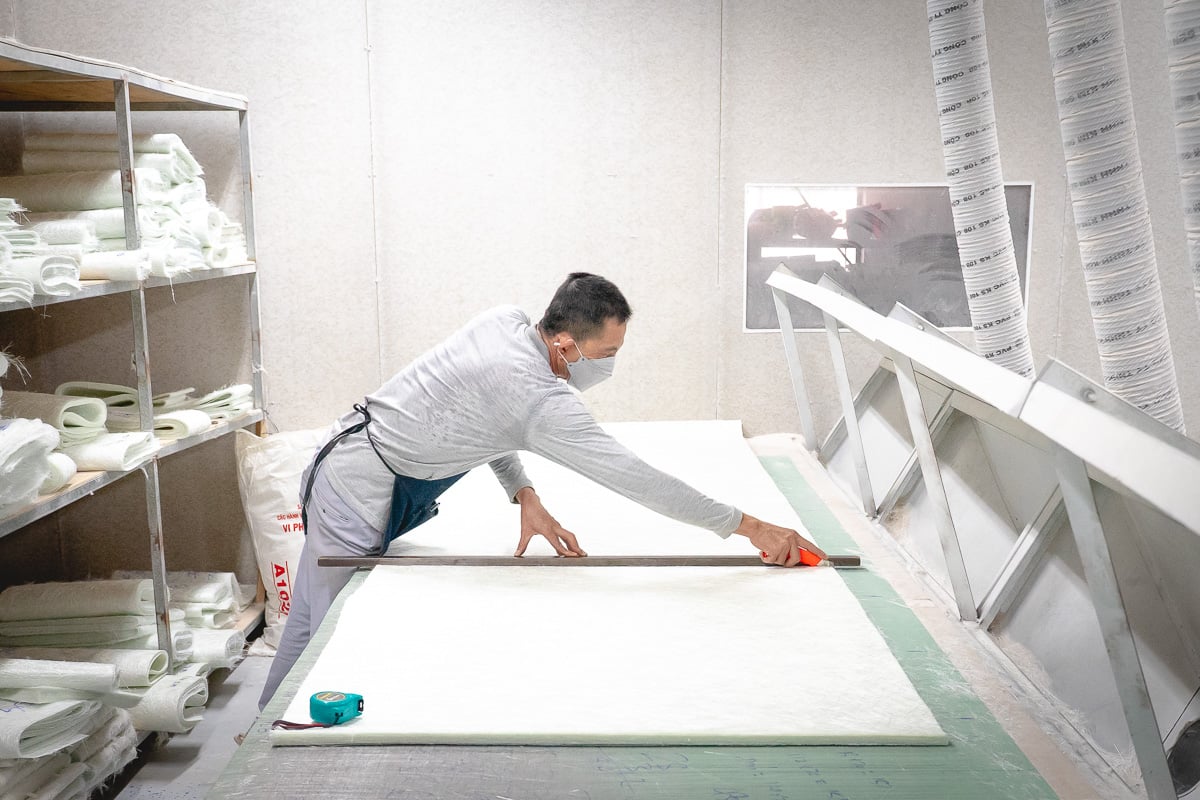- History of Fiberglass
- Background: What Is Fiberglass?
- 7 Common Types Of Fiberglass: Uses And Benefits
- Is Fiberglass Strong Enough?
- How Are Glass Fibers Made?
- We Manufacture High-Quality Planters From Fiberglass
- Top 4 Reasons Why Fiberglass Planters Will Protect Your Business
- Creative Design Manufacturing Special Molding And Custom Planter Services
- How Are Fiberglass Planters Custom Made?
- Fiberglass: The Material For Your Future
Fiberglass is a great material for making modern, professional, and commercially viable products because it is strong, durable, and weather-resistant.
It can also be molded into any shape, so it is perfect for creating custom designs. And because fiberglass is lightweight, it is easy to move around too.
There are many proponents of fiberglass including industries like boat making. In fact, fiberglass boats have been around since the 1940s and fiberglass is still the go-to material today because of its strength and durability.
Fiberglass as a material for planters has become so popular that our products have attracted professionals from many industries such as:
- Interior designers
- Hospitality companies
- Landscape professionals
- Architects
- Interior-scapers
- Property developers
History of Fiberglass
A French physicist, Rene Ferchault de Reaumur invented glass fiber when he produced textiles embellished with fine glass strands. Fiberglass was first used for home furnace filters and insulation in the 1930s.
Later on, glass fiber production began on a large scale at the end of the eighteenth century. It was a neglected composite material until 1935, and it was only after fiberglass was made into yarn, glass fabric, and glass wool that it gained popularity.
Today, fiberglass is widely used in a variety of products because it is stronger, cheaper, lighter, and more flexible than many metals by weight, as well as its ability to be molded into numerous complex shapes.
Often overlooked, this lightweight, wispy material is big business. This 5-minutes-read article will give you all the details you need to know about fiberglass.
Background: What Is Fiberglass?

Fiberglass, or fiberglass, (also known as glass fiber), is a processed form of glass that is made up of numerous and extremely fine glass fibers.
Fiberglass is primarily used as thermal and acoustical insulation, creating waterproof surfaces, and as a reinforcing agent in plastics and other composite materials.
Glass-reinforced plastic is a very good thermal insulation material. In fact, When inspecting everyday products, such as cookware, you may see terms like GRP (or GFRP) which is short for Glass Reinforced Plastic/Glass Fiber Reinforced Plastic.
Glass fibers may also be used with fiberglass resin in the manufacturing process to produce a very rigid and lightweight material that is perfect for commercial grade planters and plant pots!
Learn how fiberglass stacks up against other traditional planter materials!
7 Common Types Of Fiberglass: Uses And Benefits
You can sort fiberglasses into different groups, depending on the raw materials used and their proportions.
Here are 7 different types of fiberglass and how they are used in everyday products:
1. A-Glass
Also known as Alkali glass or soda-lime glass. It is the most widely used type of fiberglass. Alkali glass accounts for approximately 90% of all manufactured glass. It is the most common type used to make glass containers such as jars and bottles for food and beverages, as well as window panes.
Bakeware made of tempered soda-lime glass is also a perfect example of A glass. It is reasonably priced, highly workable, and quite hard. A-glass fibers can be re-melted and re-softened numerous times, which makes them the ideal type of glass fiber for glass recycling.
2. AE-glass or AR-glass
AE or AR glass stands for alkali-resistant glass – which has been developed specifically to be used in concrete. It is formulated with Zirconia as a composite material.
The addition of Zirconia, a hard and heat resistant mineral is what makes this type of fiberglass suitable to be used in concrete. AR-glass prevents the cracking of concrete by providing strength and flexibility. Moreover, unlike steel, it’s not prone to rust.
3. C-Glass
C-glass or Chemical glass is used as a surface tissue in the outer layer of laminates for pipes and tanks that hold water and chemicals. It demonstrates the greatest chemical resistance in corrosive environments due to the high concentration of calcium borosilicate used in the glass formulation process.
C-Glass maintains chemical and structural equilibrium regardless of the environment, providing fairly high resistance to alkaline chemicals.
4. D-Glass
Dielectricfiberglass is commonly used in electrical appliances and cookware. It is also the ideal type of fiberglass for optical cables because of having a low dielectric constant. This is due to the presence of boron trioxide in its composition.
5. E-Glass
Electrical glass or E-glass fiberglass cloth is an industry-standard that provides a balance between performance and cost. It is a lightweight composite material that has applications in aerospace, marine, and industrial settings. Its performance as a reinforcement fiber has made E-Glass a favorite for commercial goods such as planters, surfboards, and boats.
E-Glass in glass wool fibers can be molded into any shape or size using a very simple fabrication technique. In pre-production, The characteristics of E-glass fiber make it clean and safe to work with.
6. S-Glass
Structural glass (S Glass) is known for its mechanical properties. The trade names R-glass, S-glass, and T-glass all refer to this same type of fiberglass. They have higher tensile strength and modulus than E-glass fiberglass. This glass fiber is designed for use in the defense and aerospace industries.
It is also used in rigid ballistic armor applications. Because this type of fiberglass is high-performance and used only in specific industries, production volume is limited. This also means that S-glass can be expensive.
7. Advantex glass fiber
This type of fiberglass is widely used in the oil, gas, and mining industries, as well as in power plants and marine applications (sewage systems and wastewater systems). It combines E-Glass’s mechanical and electrical properties with the acid corrosion resistance of ECR-type fiberglass. It is used in environments where structures are more prone to corrosion.
Is Fiberglass Strong Enough?
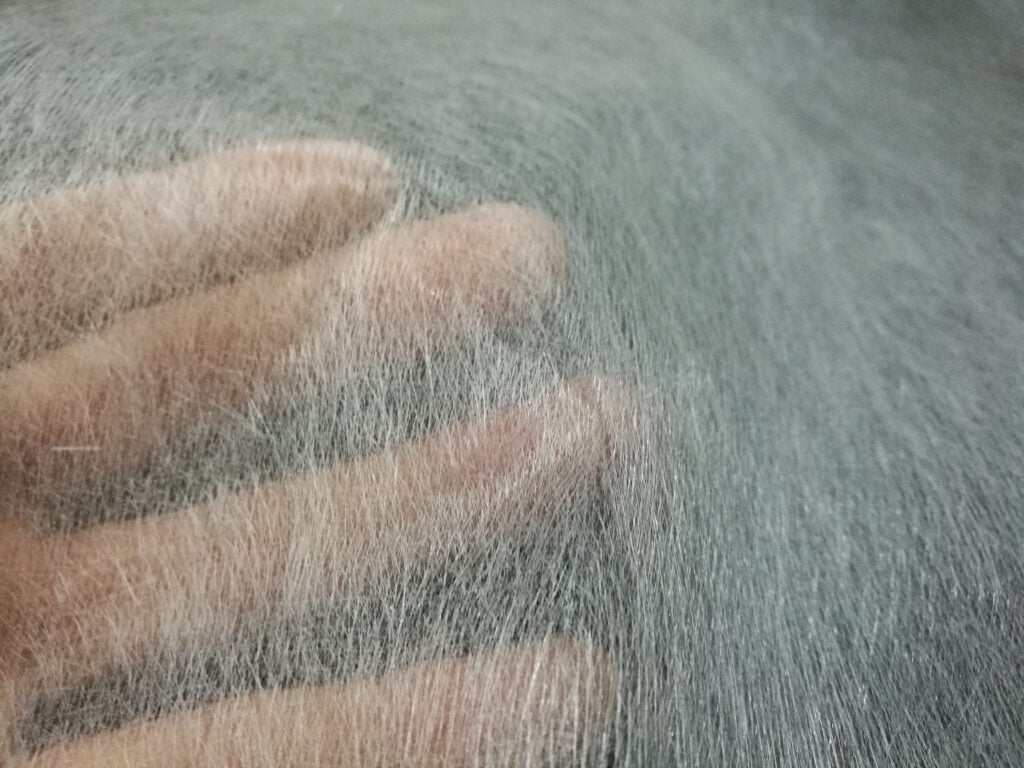
When it comes to strength to weight ratio, fiberglass easily outperforms steel. Glass fiber provides the same strength as steel with greater flex, which means it’s more durable and impact resistant. It is also stronger than steel in the lengthwise direction with overall better dimensional stability.
The quantity, type, orientation, and location of the glass fibers within the composite determine the strength of a fiberglass profile. The strength-to-weight ratio of Fiberglass Reinforced Plastic compared to metal or wood products can be up to 5 times bigger. When it comes to reaching a buckling point, high tensile strength is essential. When used in harsh environments, fiberglass retains its integrity and is corrosion resistant.
According to market analysts, the amount of fiberglass produced in 2017 was worth nearly $14 billion. They predict that by 2025, that figure will have risen to more than $21 billion, underscoring just how useful glass reinforcements are in consumer products.
As a manufacturer of small to extra large plant pot sizes, we needed to use fiberglass in all our products to ensure strength, durability, and customer satisfaction.
How Are Glass Fibers Made?
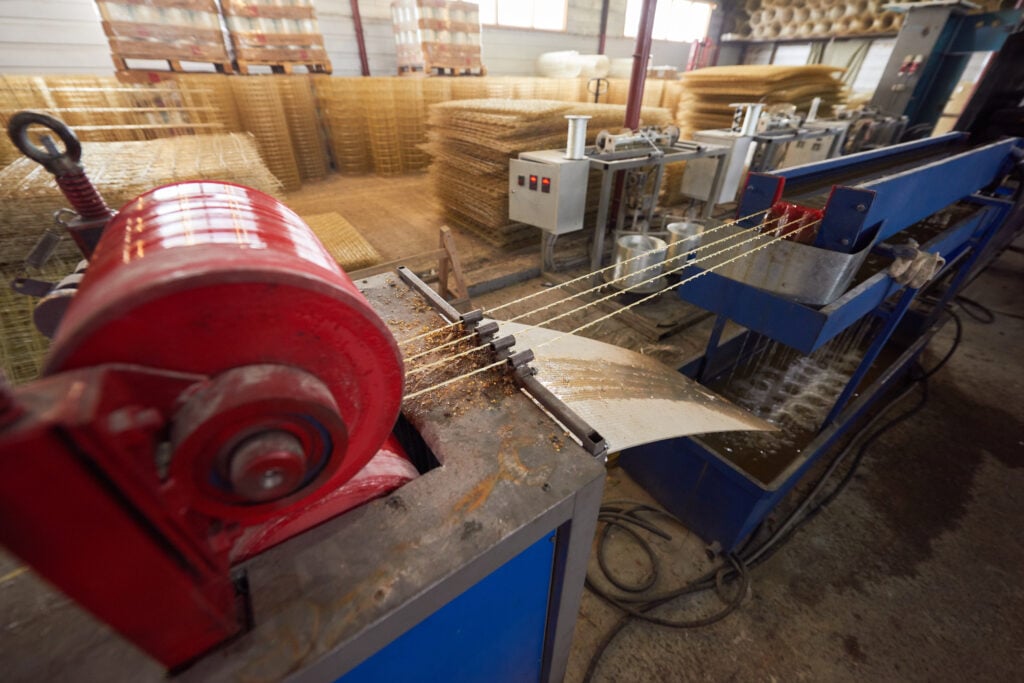
First, the glass formulation begins with silica sand, limestone, and soda ash. Calcined alumina, borax, feldspar, nepheline syenite, magnesite, and kaolin clay are some of the other ingredients that may be used. These varieties of natural minerals and man-made chemicals serve as the basic raw materials for fiberglass products.
They primarily help to lower the melting temperature. Other ingredients are used to improve specific properties, such as chemical resistance, durability, strength.
Fiberglass manufacturers typically follow the same process to make most glass fibers.
1. Batching
Waste glass, also known as “cullet”, is used as a raw material for the production of glass fiber. Before being melted into glass, the raw materials must be precisely weighed and thoroughly mixed together (a process known as batching).
2. Melting
When the batch is ready, it is placed in a furnace to melt. Electricity, fossil fuel, or a combination of the two can be used to power the furnace. To maintain a smooth, steady flow of glass, the temperature must be precisely controlled.
To be formed into glass fiber, the molten glass must be kept at a higher temperature (approximately 1371°C or 2500°F) than other types of glass. When the glass is molten, it is transferred to the forming equipment via a forehearth at the furnace’s end.
3. Fiber forming
Depending on the type of fiberglass, two different processes can be applied: Continuous-filament and Staple-fiber. Textile fibers can be formed directly from molten glass, or the molten glass can be fed to a machine first.
Fiberglass is used to make glass marbles with a diameter of about 0.62 inches (1.6 cm). These marbles allow the glass to be visually inspected for impurities. Glass or glass marbles are fed through electrically heated bushings in both the direct melt and marble melt processes. The bushing is made of platinum or a metal alloy and has 200 to 3,000 extremely fine orifices. Molten glass flows through the orifices and emerges as fine filaments.
The continuous-filament process (or staple-fiber process) can yield long, continuous fibers. As the glass flows through the bushing holes, multiple strands are caught up on a high-speed winder. The winder rotates at a rate of about 3 kilometers (2 miles) per minute, which is much faster than the rate of flow from the bushings.
The tension pulls the filaments out while they are still molten, forming strands a fraction of the diameter of the bushing openings. A chemical binder is used to keep the fiber from breaking during subsequent processing. After that, the filament is wound onto tubes. It is now ready to be twisted and plied into yarn or glass wool.
4. Protective coatings
To reduce fiber abrasion, lubricants are either sprayed directly on the fiber or mixed into the binder. During the cooling process, an anti-static composition is sometimes sprayed onto the surface of fiberglass insulation mats.
The anti-static agent is made up of two components: one that reduces static electricity generation and one that acts as a corrosion inhibitor and stabilizer. The anti-static agent penetrates the entire thickness of the mat due to the cooling air drawn through it.
The coating is applied to textile fibers during the forming process that may include one or more components such as lubricants, binders, or coupling agents. Coupling agents are applied to strands that will be used to reinforce plastics in order to strengthen the bond to the reinforced material.
We Manufacture High-Quality Planters From Fiberglass
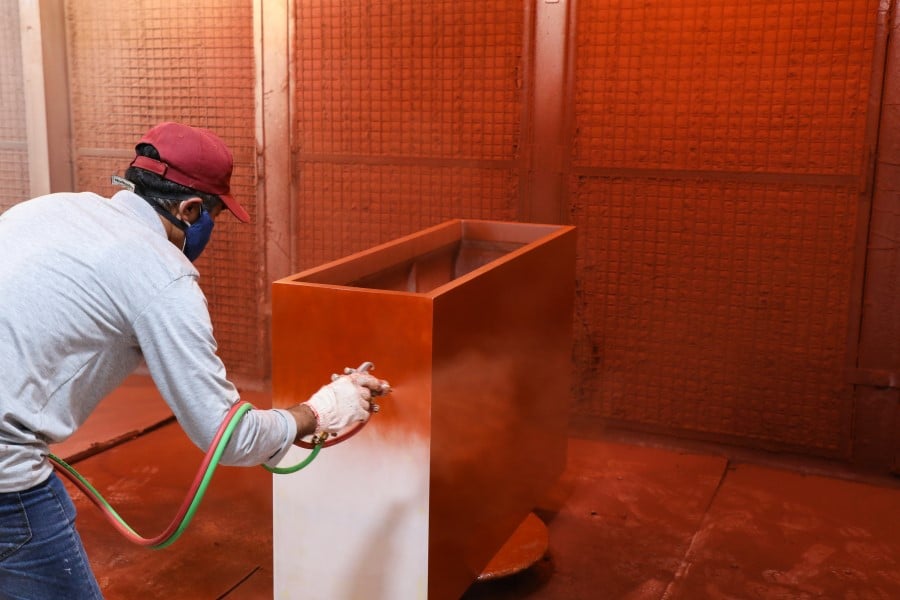
At Creative Design Manufacturing (CDM), our Research and Design Team works tirelessly to ensure that our fiberglass planters are not only the highest quality planters on the market but also the most progressive and elegant.
As a result, there are over seventy standard planter designs in our collection with a multitude of sizes that are designed for indoor and outdoor use.
Here are our best planters for 2022.
Top 4 Reasons Why Fiberglass Planters Will Protect Your Business
1. Cost Efficient
Because of its exceptional durability, fiberglass is a very popular material for planters. Fiberglass is a durable, fade-resistant, chemical-resistant, and corrosion-proof material. This makes it perfect for both interior and exterior applications.
They can be used in any season, for many long years and our fiberglass technology requires little to no maintenance and upkeep which saves you a lot of money in the long run!
2. Time-Saving
No more complicated maintenance routines! The only thing that needs to be done is a light cleaning with a damp sponge or rag. If you want to add even more luster, polish them with automotive or marine paint wax now and then.
3. Aesthetically Flexible
Fiberglass planters come in a variety of colors and finishes to match any existing decor. Once your customers find that fiberglass products offer the widest range of shapes, designs, colors, and finishes, they will be very happy! Fiberglass planters make a striking addition to any area and greatly accentuate business and residential premises.

4. No Heavy Lifting
You may need fewer workers, equipment, and time for installation because of its lightweight properties. This also reduces downtime and on-site injuries associated with conventional materials and installation equipment.
After the planter has been installed, any re-arrangement is easy, for large planters, simply remove enough soil so the planter is light enough to move. The planter itself is the lightest commercial product on the market.
Learn why Sourcing From Vietnam will grow your business.
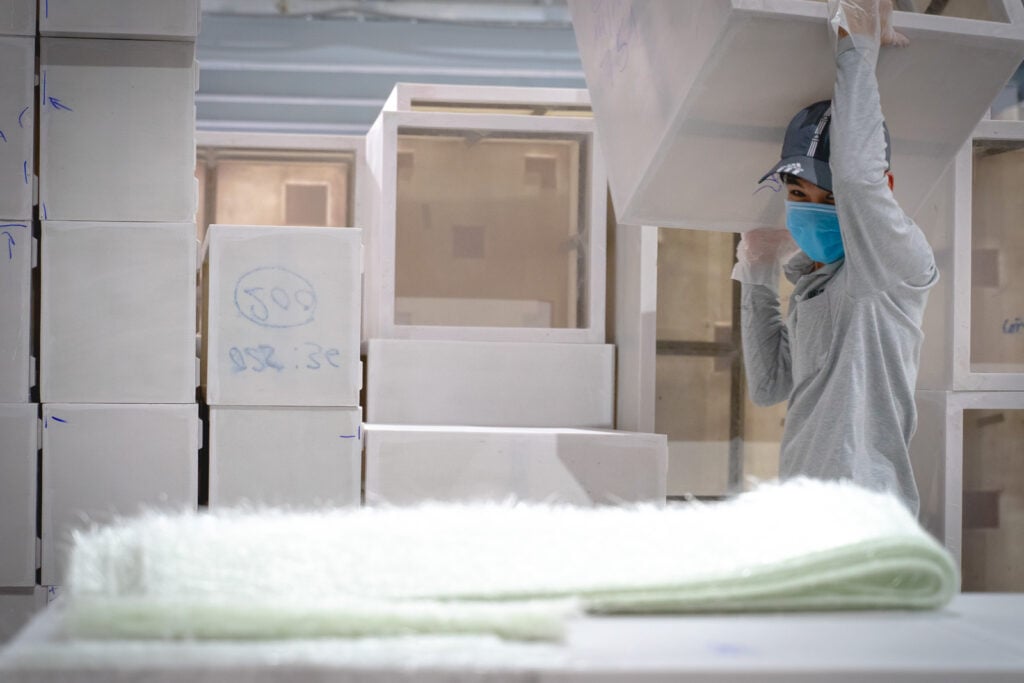
Creative Design Manufacturing Special Molding And Custom Planter Services
Aside from our standard white-label planter range, Creative Design Manufacturing also offers a number of bespoke and custom planter solutions including ODM and OEM. For this service, our molds are custom-made to our customer’s design specifications.
How Are Fiberglass Planters Custom Made?

When we receive a custom order, new molds must be made. To do this, first, a negative image of the product is fabricated with a very high-grade piece of fiberglass, this becomes the mold.
Then, fiberglass and fiberglass-reinforced resin materials are formed into useful shapes by applying several layers of fiberglass which are laid down inside the mold and bound with resin.
A polyester resin is brushed on to bind the layers of fiberglass to form an incredibly hard and smooth planter surface. and with the desired thickness inside the mold.
Learn more about why we use resin in our planters
The fiberglass will then need 1.5 hours to dry. Once completed and cured, the planter is separated from the mold using wedges, compressed air, or both.
The next step involves quality checking the end product for air bubbles or other impurities and removing them. The products are then sanded down for a smooth appearance. A special protective coating is applied to increase weather resistance and durability.
Finally, a layer of topcoat paint is added either in the factory or once the planters have been delivered to our wholesale suppliers.
Want to know more about us? See inside our factory!
Fiberglass: The Material For Your Future
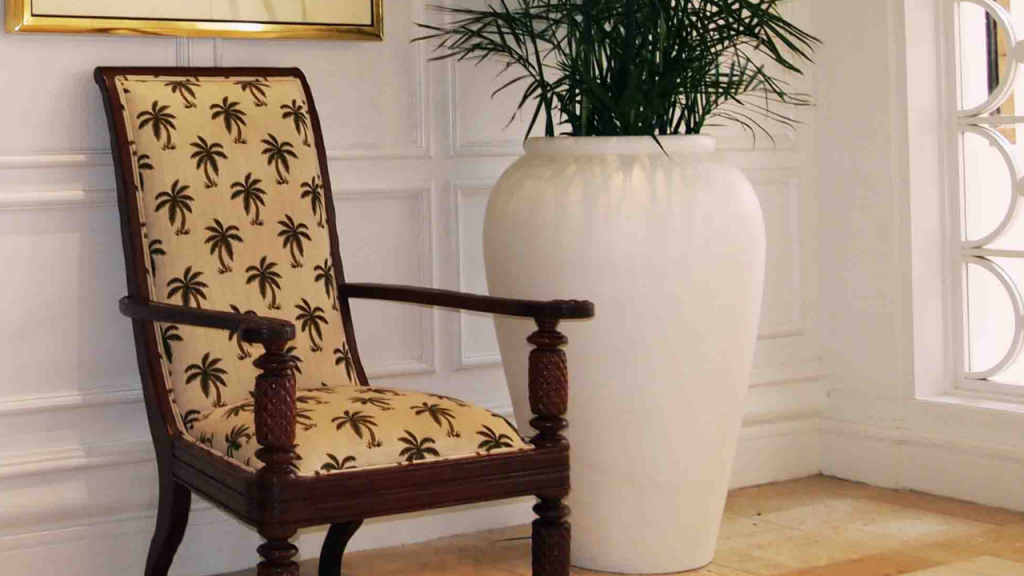
It’s clear to see why fiberglass is such a revolutionary material, with its outstanding durability, lightweight, and low prices, to name a few.
Our company is proud to be a high-quality fiberglass planter manufacturer. To produce the finest fiberglass planters for some of the best-known brands in the world, our planters go through a complex manufacturing operation with several levels of quality control. We offer a wide selection of planters, but we can also tailor them to your designs too!
As a company that operates globally, we are well versed in the tricky nature of sourcing from overseas. To get clarity on your biggest challenges right now, contact us with any questions and our team of engineers and sales consultants will provide solutions.
